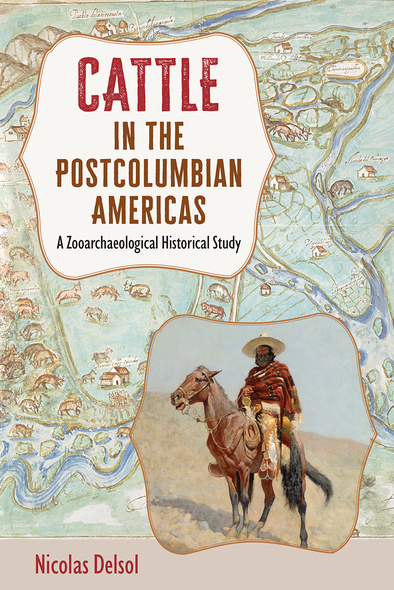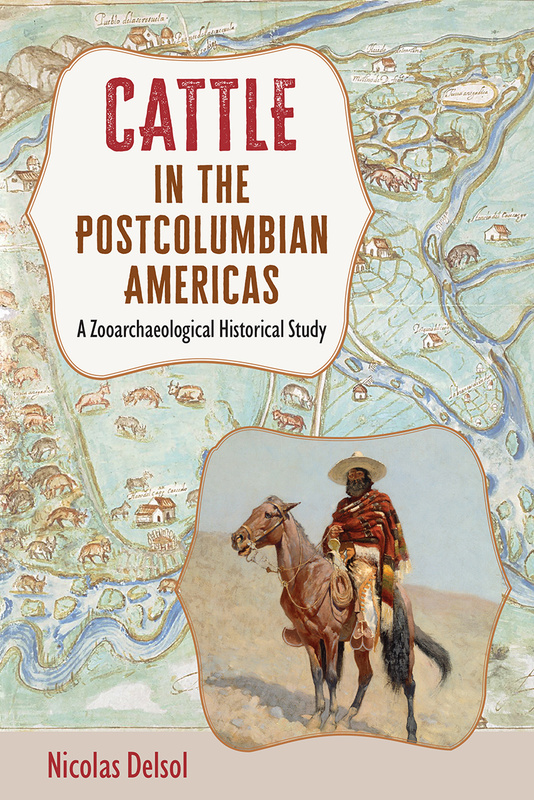
Cattle in the Postcolumbian Americas
A Zooarchaeological Historical Study
How the arrival of cattle transformed life and society in the Americas
In this book, Nicolas Delsol compares zooarchaeological and material evidence from sites across Mesoamerica and the Caribbean to show how the introduction of cattle, beginning with imports by Spanish colonizers in the 1500s, shaped colonial American society.
Before European colonization, cows were vital in European and African societies but were unknown to the Native communities of the Western Hemisphere. This book traces their impact in the Americas by using a broad range of methods, such as ancient DNA analyses on faunal collections from major postcolumbian sites. Delsol describes the place of cattle in the colonial culture and landscape, beginning with the transportation of cattle across the Atlantic and moving to herding practices in new habitats, butchery techniques, and the production, trading, and use of cow byproducts.
Cattle in the Postcolumbian Americas is the first large-scale regional archaeological study of the introduction of a European domesticated species to the Americas. Using both zooarchaeological and historical data, Delsol argues that the arrival of cattle was a major consequence of European colonization with effects that have often been overlooked.
“Sets a new standard for all future zooarchaeological work on colonial sites in Mesoamerica and the Caribbean and establishes patterns of cattle usage that other researchers will find valuable throughout the Americas.”—Nicole Mathwich, San Diego State University
“In this multifaceted work combining both new zooarchaeological research and careful historical study, Delsol has drawn together a tremendously diverse range of data to masterfully characterize the earliest stages of the spread of cattle into the Americas and its complex social and economic impacts on the Caribbean and Mesoamerica.”—William Taylor, University of Colorado Boulder
“This important study employs rigorous analysis of cattle bones from several archaeological sites in Mexico, Central America, and the Caribbean to confirm and significantly expand on previous studies.”—Andrew Sluyter, author of Black Ranching Frontiers: African Cattle Herders of the Atlantic World, 1500–1900
Nicolas Delsol is a researcher in the historical archaeology program at the Florida Museum of Natural History.
Contents
List of Figures ix List of Tables xi
Acknowledgments xiii
1. Introduction 1
2. Following the Cattle Assemblage 9
3. Historical and Archaeological Context 22
4. Zooarchaeological Data 68
5. Exploring the Origins of Postcolumbian Cattle 86
6. Raising Cattle in Colonial Spanish America 99
7. Cattle and Butchers 128
8. The Transformation of Cattle 162
9. Conclusion 190
References Cited 203
Index 243





